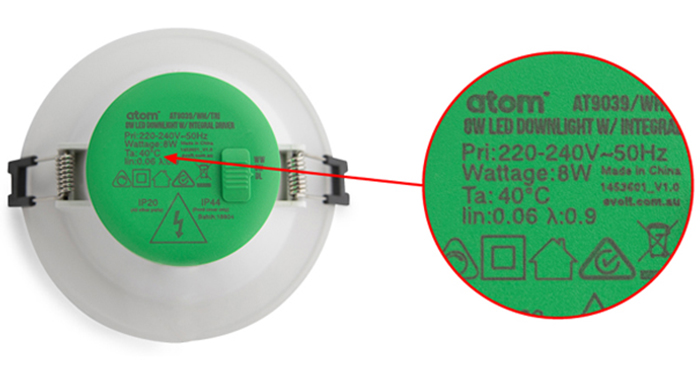How to Identify the Maximum Ta Rating on a Product

When installing electrical devices, especially lighting fixtures such as LED downlights, understanding the maximum ambient temperature rating (Ta rating) is crucial for ensuring safety and longevity.
Here’s a guide on how to identify the maximum Ta rating on a product and why it matters.

What is the Ta Rating?
The Ta rating, or maximum ambient temperature, is the highest temperature at which a device has been designed and tested to operate safely. Exceeding this temperature can lead to product failure, reduced lifespan, and potential safety hazards, including the risk of fire.
Why is the Ta Rating Important?
Safety: Operating a device beyond its Ta rating can cause it to overheat, posing a fire risk.
Performance: Devices operating above their Ta rating can have reduced performance and shorter lifespans.
Compliance: Adhering to the Ta rating ensures compliance with safety standards and regulations, protecting both the installer and end-users.
Steps to Identify the Maximum Ta Rating
Check the Product Label:
- Most electrical devices will have a label indicating the maximum Ta rating. Look for information such as “Ta: 40°C” or similar markings.
- The label is typically found on the exterior of the product, packaging, or in the installation manual.
- If the product is only suitable for Ta 25°C, then the label can be omitted from the product.
Consult the Manufacturer’s Documentation:
- The product manual or datasheet will often provide detailed specifications, including the Ta rating. These documents can usually be found on the manufacturer’s website or included with the product.
- Look for sections titled “Operating Conditions,” “Environmental Specifications,” or “Technical Data.”
Inspect the Installation Instructions:
- Detailed installation instructions should specify the maximum ambient temperature for safe operation. These instructions are crucial for ensuring the device is used within its safe limits.
Understand the Standards:
Be aware of the relevant standards that apply to the product.
For instance, AS/NZS60598.1 and AS3000 provide guidelines on maximum ambient temperatures and safe installation practices.
AS/NZS60598.1, Clause 3.2.3, outlines the requirements for the maximum ambient temperature rating of luminaires.
AS3000 Clause 4.5.2.1 General lamps, luminaires, and their associated ancillary gear must be installed so as not to cause undue temperature rise, ignition, or deterioration of the materials—
- (a) on which they are mounted; or
- (b) that they illuminate. Luminaires must—
- (i) be suitable for the highest temperatures to which they are likely to be subjected by external influences; and
- (ii) be installed in accordance with the manufacturer’s instructions, considering the highest rating of the lamp to be used.
Contact the Manufacturer or Supplier:
If the Ta rating is not clearly indicated, contact the manufacturer or supplier for clarification. They should be able to provide the necessary information to ensure safe installation.

Practical Tips
Visible Marking: Ensure that the Ta rating is visible during installation. It may be on the outside of the luminaire or behind a cover that is removed during installation.
Installation Environment: Consider the typical ambient temperature of the installation environment. If the local climate regularly exceeds the product’s Ta rating, it may not be suitable for use.
Proper Selection: Choose products tested and rated for higher temperatures if the installation environment demands it. This consideration is particularly important in regions with high ambient temperatures.
Common Ta Ratings and Their Implications
Ta 25°C: Suitable for environments where the ambient temperature does not exceed 25°C. Common in controlled indoor environments but may not be suitable for warmer climates.
Ta 40°C or Higher: Designed for harsher environments, these products are tested to operate safely at higher temperatures, making them suitable for outdoor use or in regions with high ambient temperatures.
Summary
Identifying the maximum Ta rating on a product is a crucial step in ensuring safe and effective operation. Always check the product label, consult the manufacturer’s documentation, inspect the installation instructions, understand the relevant standards, and contact the manufacturer if needed. By doing so, you can ensure that the products you install are fit for purpose and compliant with safety standards, thereby protecting both property and lives.
By paying close attention to the Ta rating, you can make informed decisions that enhance safety and performance, ensuring a reliable and durable installation.


